A BELL RINGS AS IT THUMPS against the door. You enter a tiny box of a room full of strange potions and elixirs, labeled with names like “baharat” and “berbere.” You’re immediately hit with the smell of exotic things and faraway places, which seems almost to soak into you as you stand there. You hear the owner rummage around in back until his head pops up in the window—”What can I help you with today?” What, indeed—a wand for a young wizard? An adorable little creature, who comes with some rules about not getting him wet?
It’s a scene from movies that occasionally comes true in real life—the little shop of strange and curious wonders. The items for sale at Epic Spices are literally the things that men searched the world for centuries ago, that made fortunes and started wars—cinnamon, cardamom, nutmeg, vanilla, peppercorns. And about 500 other things, which can be combined almost infinitely.
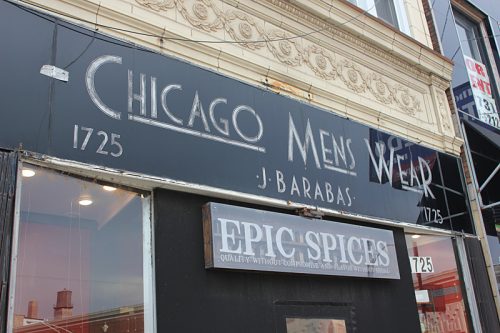
Epic Spices, 1725 W. Chicago
Epic Spices is owned by Steven Tobiason, who I spoke with that day, and his wife Natalie Haliziw. Tobiason is part African-American, part Norwegian, and grew up in Englewood; Haliziw is Latino from Texas on one side, Ukrainian on the other—and she belongs to the only Haliziws on the planet, as the name was garbled from something no one remembers now when her grandmother escaped from the Ukraine during the Holodomor in the 1930s. With their mix of backgrounds, they seem almost made for a business built on searching the world for unusual things.
The business is located in an old Polish men’s haberdashery, which had most recently been a dentist’s office—hence the tiny storefront looking very much like a waiting room. (Hilariously, Tobiason says they still get free boxes of toothpaste samples from Colgate every October, to give out on Halloween.) Only a small number of the most popular spices are bottled or bagged for sale out here; the rest are stored behind a door which is blocked to visitors (especially the camera-toting kind), to preserve the secrets of where they acquire their rare and wondrous goods.
But ask about a particular spice and Tobiason will disappear in the back and return with a big jar, encouraging you to take a whiff, or a taste. In each case the flavors, exotic or familiar, are intense, multi-dimensional—about the best of that thing you’ve ever tried.
It’s not exactly a secret, but the characteristic that most of their spices share is the obvious one—freshness. “They all have the same issue. They need to get from the farm to your mouth as fast as possible,” Tobiason says. “There’s ways to preserve it during that trip, and there’s ways to kind of act against its best interests along that journey. If the product is kept in its whole form, it’s a lot more stable. If pepper is ground at the farm, it’s okay. If we grind it right before you buy it, it’s better—and it’s best if you grind it yourself.”
There are different ways he acquires the spices—for a high volume product he deals directly with farms, or with consolidators based in the region. For things he buys in smaller quantities, it’s from U.S.-based brokers. Either way, the end result for the customer is to make the connection to the point of origin as direct as possible. “The function of a spice merchant is no different from that of a butcher or a baker. You don’t have to keep a half a steer yourself if you live near a good butcher,” he says.
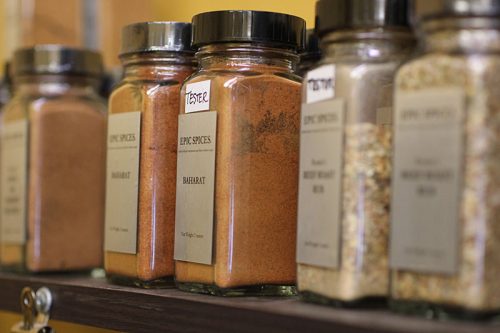
I ask him one of the obvious questions—what does he sell the most of? “It’s never as exciting as you want it to be,” he says. “Pepper, cinnamon, cumin.” All the same, the rare and unusual are an essential part of business. “One of the things that we get to happily do is provide a lot of off the wall ingredients, because it keeps the restaurateurs happy, and then the retail side benefits too. The cocktail crowd—in the quest to find competitive uniqueness, a lot of people come here, and we’ve been able to help them out.”
He takes me into the entryway to show me an example in the display of spices in the window—a bowl of dried blossoms with a deep blue color, which it will release in interesting ways in cocktails or teas. “I heard about the butterfly pea flower, anchan I guess it’s called in Thailand, from someone who was from there. They said, can you get this? Google blue flower Thailand, there it is, so I got some in and they used it for a while,” he says. “Then they moved on to the next new thing. But that’s okay. Everything we get, somebody buys.”
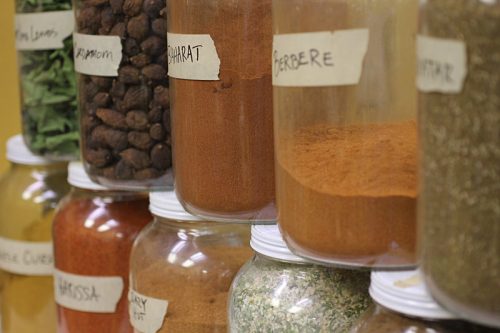
SOFT-SPOKEN AND QUIETLY DROLL, Tobiason claims to be shy about press—he begs off a portrait photo because he doesn’t want to appear without his wife, and partway through our conversation he claims that his plan was to divert me to El Taco Veloz for breakfast and use up our allotted interview time shooting the breeze. But the fact is, once you get him started about the spices he loves, he runs without further winding. He’s definitely one of those shopkeepers who can give you a full education in his topic over a $16 sale. “As my father would say, Norwegians neither boast nor complain. I just want to make sure people have the best spices they can have,” he says.
He got started in the spice business pretty much by chance. “I went to Kendall College when it was in Evanston, and the class size was 14 people instead of 214 people or whatever it is now,” he recalls. In the cafeteria he saw a Help Wanted ad for a spice store that had just opened in Evanston. “I thought, I’m broke, I like money, beer doesn’t grow on trees,” and he became the second employee hired by The Spice House, a Milwaukee business which had just set up in the Chicago area.
He worked there one summer and then went back to school. He finished his schooling and worked in “some restaurants of no repute” before moving into hospital foodservice management. But the summer job had changed his outlook without his knowing it—yet.
Every day that I’ve been here I’ve tasted something new. I could live to be 500 million years old and I wouldn’t taste them all.
“I wasn’t feeling it,” he says. “It was a lot of making the same thing over and over again. ‘Okay, this is delicious. Okay, this is still delicious,'” he says. “And I thought, this is nothing like that spice job, where everything tasted different, every second of every day, and it was always a challenge.”
He went back to The Spice House, becoming a manager and creator of many of their in-house blends (such as this brisket rub). He traveled whenever he could afford to, to places where spices came from—”I wasn’t a business person’s kid running around the world with a backpack and a bong. I worked at a store,” he says. “But I decided I was going to go to the source and learn about things that I could go to, often.” Along the way he met Natalie, who worked as a server and spent a few months at The Spice House, and they went together on some of these trips—”We spent a lot of time in vanilla fields in Mexico, which is where vanilla is originally from, and a lot of time on pepper plantations in India, which is where pepper is originally from.”
After about a decade, he and Natalie decided to go out on their own to serve a particular market niche they saw. Which, as it turns out, didn’t actually exist.
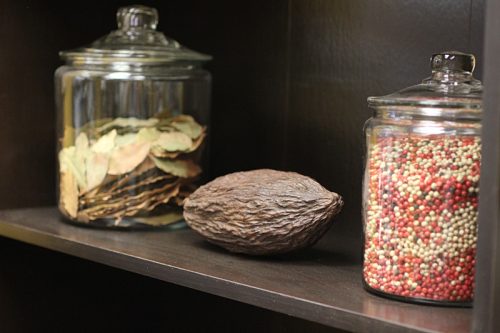
Bay leaves, cocoa pod, peppercorns
“WHEN WE FIRST OPENED IN 2013, we had this great idea that we would supply peppercorns, and that was all we would do,” Tobiason explains. “We weren’t open to the public, and we went to restaurant after restaurant and said, we will custom grind, to order, pepper for you. And each place said, well, what else do you do?”
The best pepper in the world couldn’t overcome the fact that it was just easier to add pepper to an order from someone you were already buying plenty of other things from, than to deal with a pepper-only vendor. “We fell on our face,” is how he puts that phase of the business’s history.
Searching for a different model, they noticed that something called the West Town Art Fair was coming up. “We said, there’s going to be a thousand people from the neighborhood on the street, and we’ve got two months to prepare for it. Let’s open up to the public and try to make it work that way.”
By October when the fair came, “We opened with a product line of 18 different things. Each shelf had one thing—a whole shelf of dill, or thyme. People came in and they bought what we had, they saw the potential,” he says. “And they asked us, can you make blank—a curry powder, a garam masala. For the first year, any time someone asked us to make a blend, we’d put their name on it—Chloe’s Garam Masala comes from a woman who came in with her infant daughter, Chloe. So we just kept adding stuff.”
The customers included people who worked in restaurants, and pretty soon they found that the retail business had forced Epic to expand its product line to the point that they offered enough different things to make them worth the trouble of ordering from for restaurants. Today they have about 60 or 70 restaurant customers plus other commercial accounts like sausage makers, and he says, “It’s a lot more than we ever signed up for, but I’ve been doing this for 20 years because I love it. There’s no shortage of entertainment in the flavor business for me.”
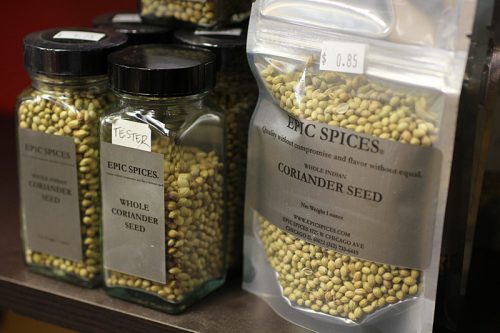
“THINK OF HOW MANY BALLS THERE ARE in the Lotto machine,” Tobiason says. “50. So with 50 different spices, you have 200 million different permutations. Well, we have 500 spices. So every day that I’ve been here I’ve tasted something new. A thousand times. I could live to be 500 million years old and I wouldn’t taste them all. So that is endlessly fascinating to me.”
He brings out a row of jars, then stops and hesitates about one of them—which, it will turn out, I have a connection to. “Onion dip, that’s not very exotic,” he says.
“Hey, nothing wrong with those classic Americana flavors,” I offer.
“Well, we have this because I made it for Michael Simmons for—”
“For Key Ingredient,” I say. Simmons, of Cafe Marie-Jeanne, did the Reader’s chef challenge while he was at Rootstock, which I shot the video of, and he had Epic mix up an imitation of the 1950s packet seasoning for party dips.
Blending and reverse engineering familiar flavors is part of their business, too. “We get some pretty goofy requests. Like, we want to turn plain rum into Captain Morgan’s-style spiced rum. Or, I picked up this spice blend in France, can you make it for me. We have a few blends that we are inspired by a commercial product somebody walked in with, and I say, if I can look at it, if I can taste it, if I can spread it around on a white sheet of paper and match particle shapes and sizes, I can probably do it.”
The end result is usually that he improves it in the process. “Everything ends up being more natural-tasting, and people like that,” he says. “The sample that they give us might be 90% MSG. And we’ll say, we don’t really work with those substances, but we’ll make something that tastes like it that doesn’t have all that nonsense.”
“I have to assume that maybe at some point those companies that produce those spice blends had purity of intention before profiteering took over,” he says. “Or before they had to produce it in a 500-gallon drum, with preservatives to keep the vermin out. Either way, we don’t have any of those issues here. We don’t produce anything in massive batches. If Avec wants us to make a roasted spice blend that’s going on a hanger steak and hummus appetizer, we make the amount that they ask for. We don’t scoop it from a barrel. Every time they get the package off the shelf to use it, it’s only a week old. There is no question.”
“And when that hits the plate and the diner, they can tell that it’s fresh and vibrant. And it’s not artificially fresh or vibrant because we put a bunch of weird witchy-poo stuff in it.”
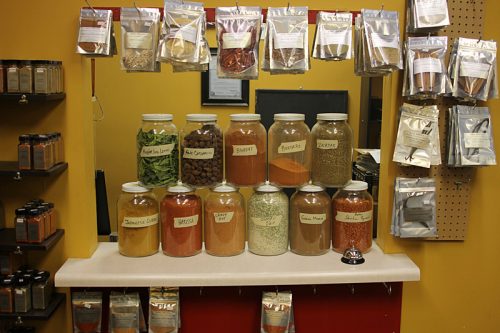
Tobiason considers Epic Spices to be a part of what makes Chicago dining what it is, in the same way that other vendors, like farmers, enable chefs to make the best things that they can make. “You don’t see Epic Spices on menus, the way you do somebody’s beef or chicken,” he says. “Some of it’s at Whole Foods, in their products. It doesn’t have our name on it, but maybe it should.”
By now, the retail that saved them and gave them a new direction is just a small part of their business—about 15%, he says. But it still matters to them—”If somebody walks in, we’re thrilled to see them, because it’s a break. It’s a challenge. We know what the restaurants want. But somebody walks in the door, it could be anything. It’s my in-laws are coming in for Thanksgiving and I don’t want to screw up the turkey dinner, so we help them. We walk them through it, and we hear from them later, it was such a hit.”
I ask him one more obvious question, that occurred to me as soon as the cinnamon-pepper-everything smell of the place hit me and started soaking into my clothes and hair. “Do you ever get to where the smell in here, it blows out your sense of smell?”
He shakes his head. “I haven’t smelled this place in years. The general aroma in here, your brain tunes that out. My sense of smell is fine—if you walked in with a pizza, I’d be like, where’s the pizza?”
Michael Gebert sails the seven seas as editor of Fooditor.
Latest
Join the Discussion
After you comment, click Post. If you're not already logged in you will be asked to log in or register with Disqus.





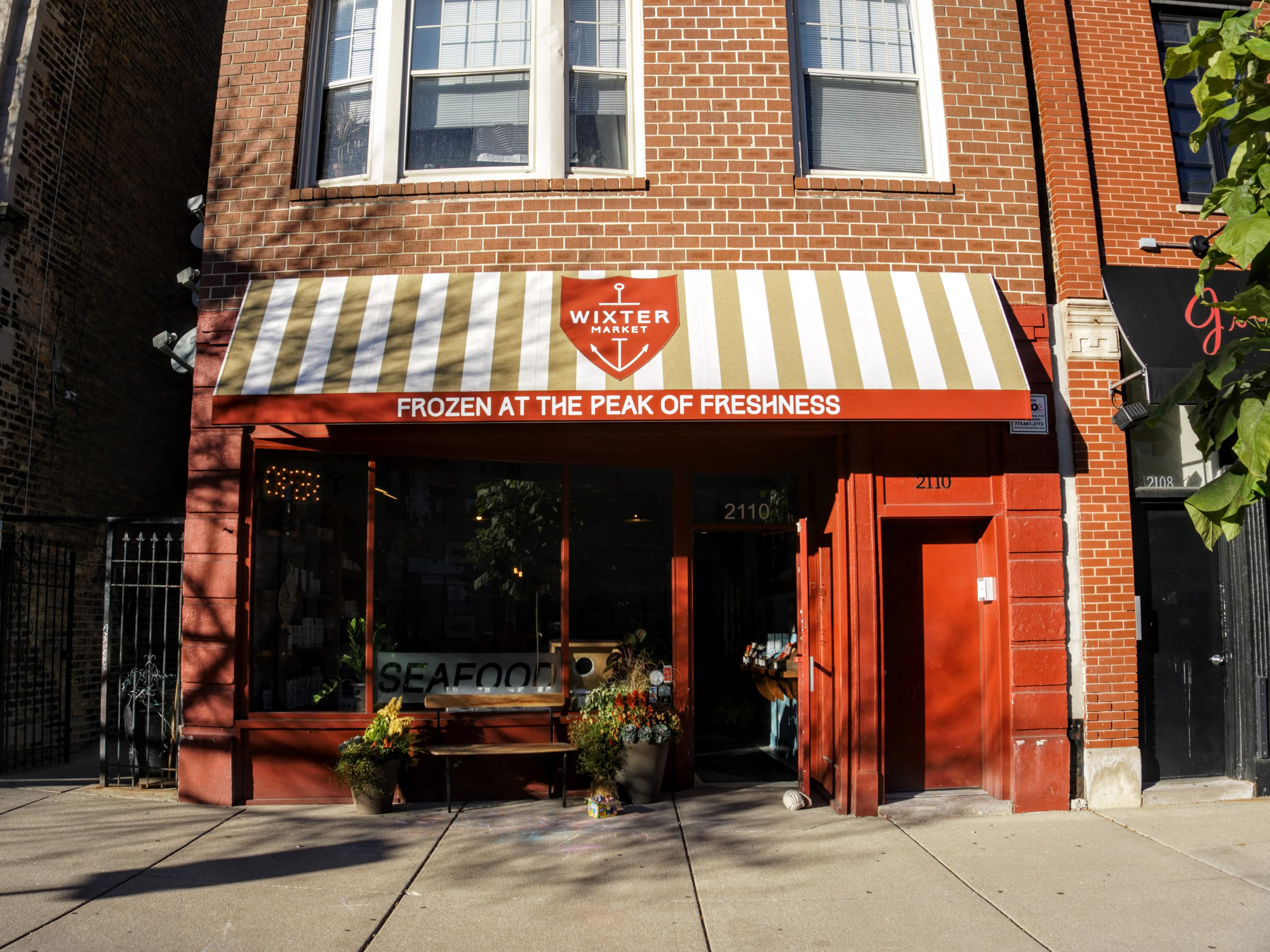
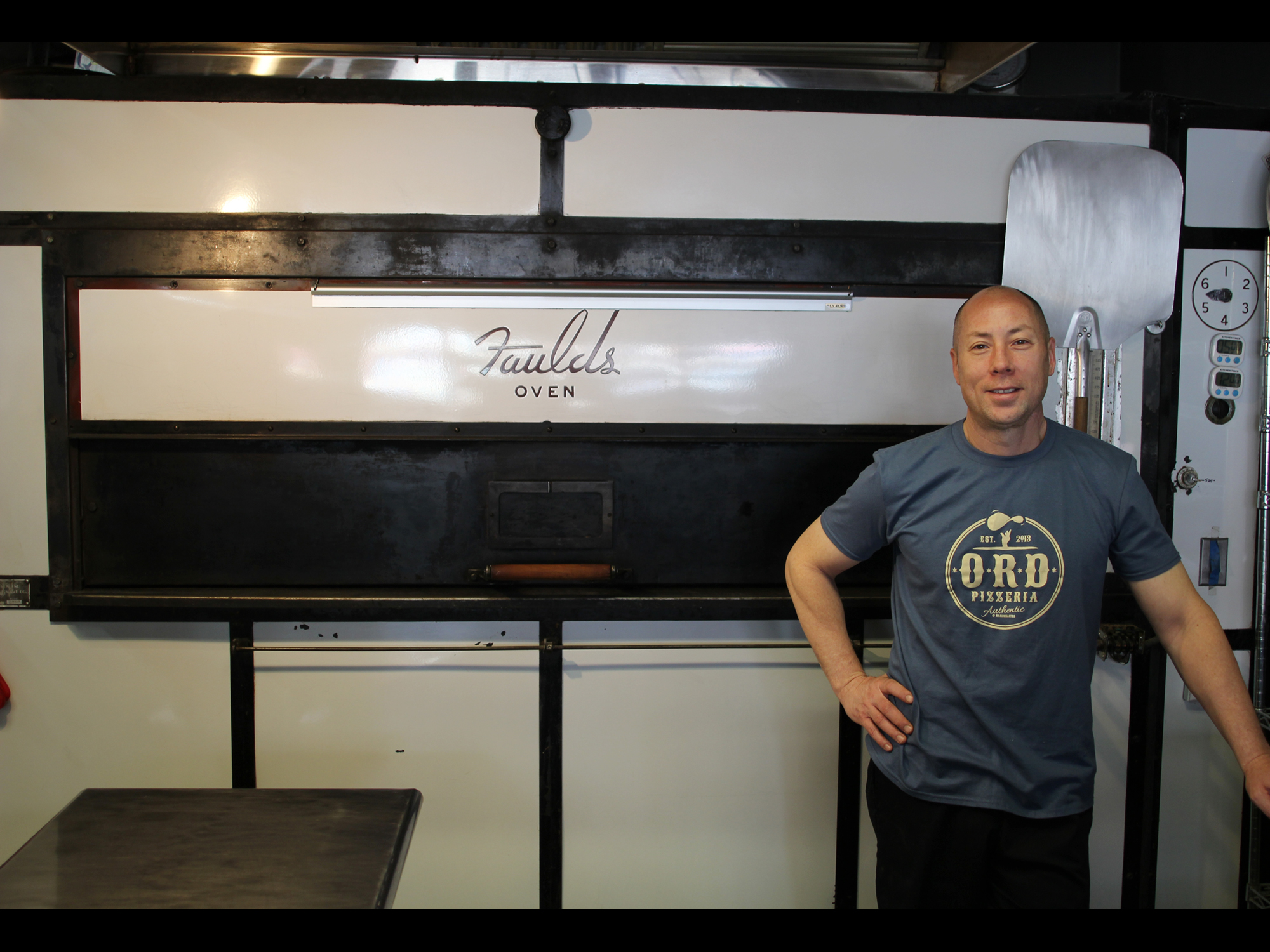
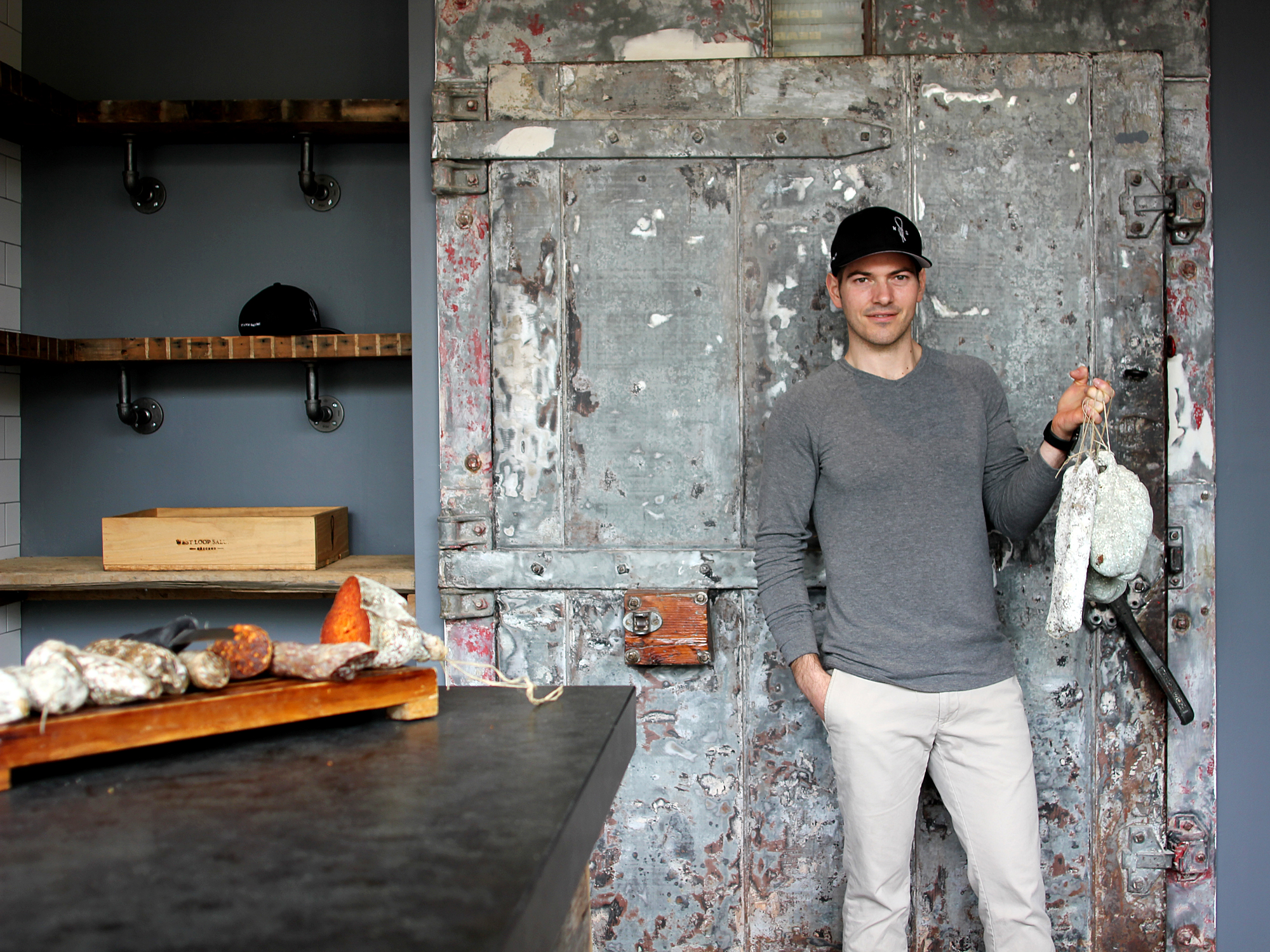
Best damn spice shop ever. Full stop.